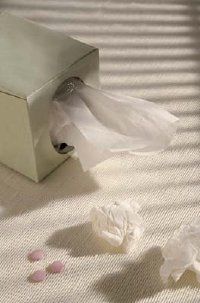Any infection that makes it difficult to breathe is no laughing matter. You may be able to prevent most respiratory infections by taking some simple precautions, but some might require more proactive measures. Follow the tips here and you'll be breathing easier for years to come. This article discusses bronchitis, Legionnaires' disease, pneumonia, sinusitis, and tuberculosis. Here's a preview:
- Preventing BronchitisWhen the lining of your bronchial tubes comes into contact with a virus, bacteria, or irritating pollutant, it becomes inflamed. Bronchitis symptoms can include a mild fever, fatigue, shortness of breath, and a cough that brings up yellow or green mucus. Bronchitis often shows up three or four days after you've recovered from a cold or flu.
- Preventing Legionnaires' DiseaseLegionnaires' disease is a form of pneumonia that is resistant to some antibiotics. It was named after an outbreak at a Philadelphia hotel during an American Legion convention in 1976. Symptoms of Legionnaire's disease can include fever, chills, cough, muscle aches, headache, fatigue, chest pain, and sometimes nausea, vomiting, and diarrhea.
- Preventing PneumoniaPneumonia is most often caused by a virus, but it can also be the result of bacteria, mycoplasmas, fungi, and even certain chemicals. During a pneumonia infection, the lung tissue becomes inflamed and the air sacs fill with fluid. A pneumonia vaccine is now available and is effective in 80 percent of healthy adults.
- Preventing SinusitisSinusitis most often flares up when you've had a stuffy nose as a result of a cold or allergies. Your sinuses get infected and then swell and build up additional mucus. In addition to a stuffy nose, sinusitis symptoms can include sinus tenderness, yellow or green nasal and postnasal drainage, headache, cough, fever, and bad breath.
- Preventing TuberculosisTuberculosis is a very serious infection, but only 10 percent of people who are infected with tuberculosis develop active tuberculosis. In active tuberculosis cases, bacteria can attack any organ in your body, causing a long-lasting (sometimes bloody) cough, chest pain, fatigue, fever, weight loss, and drenching night sweats.
This information is solely for informational purposes. IT IS NOT INTENDED TO PROVIDE MEDICAL ADVICE. Neither the Editors of Consumer Guide (R), Publications International, Ltd., the author nor publisher take responsibility for any possible consequences from any treatment, procedure, exercise, dietary modification, action or application of medication which results from reading or following the information contained in this information. The publication of this information does not constitute the practice of medicine, and this information does not replace the advice of your physician or other health care provider. Before undertaking any course of treatment, the reader must seek the advice of their physician or other health care provider.
Advertisement



